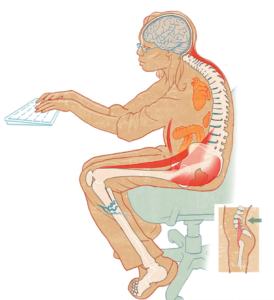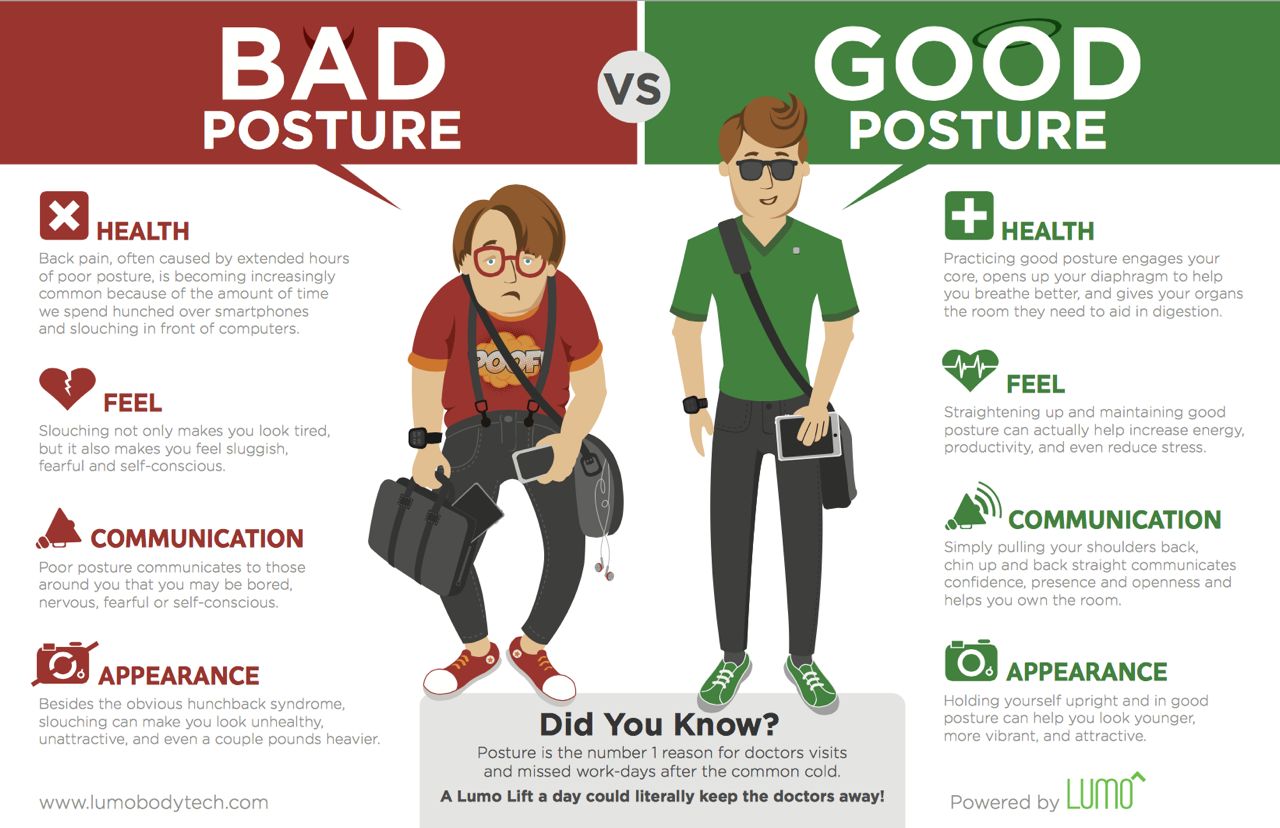Negative Health Effects of Sitting Disease – Beyond Weight Gain

It is a well-established scientific fact the human body was simply not designed to sit for many hours at a time. Our ancestors walked an average of eleven miles per day while hunting, gathering, and recreating. Ironically, the very technology we use today to make our lives easier—so we can press buttons to perform our work, communicate, order food, or play games—is also killing us.
What Are the Effects of Sitting Disease?
The advent of computing tools, cellphones, modern transportation, and an overabundance of enticing television programming is having significant detrimental effects on our society’s health as a whole, as now evidenced in the explosive rise of sitting disease. It’s happening in all developed countries around the world from Mexico to New Zealand.
The rates of metabolic syndrome (leading to obesity and diabetes) and of many other related diseases are rising meteorically. The ramp up in follow-on afflictions such as high blood pressure, high cholesterol, high triglycerides, increased joint, neck, shoulder and back pain, and much more can all be traced back to the rise in sitting disease. Lower back pain, “computer hunch” issues, poor circulation in the lower extremities, and shortened life expectancy also go hand-in-hand with a sedentary lifestyle.
In 2012 alone, 1,300 peer-reviewed studies were published linking sedentariness with heart disease, obesity, diabetes, high blood pressure, and other negative health effects. Most sufferers of sitting disease also have poor ergonomic setups when they are at their computers. Walk down to the IT department and take a look at how many workers exhibit the classic computer hunch. While ergonomic desks, chairs, and keyboard trays exist in the marketplace, few of us spend the time to research it or the money to equip ourselves properly.
Hover your mouse above the graphic below to reveal percentages, and click between the two circles at the top to review two different visual maps.
The Least Talked About Symptom of Sitting Disease
One of the most obvious symptoms of sitting disease in the eyes of physical therapists and other healthcare practitioners is often left completely off the list, and that symptom is “disuse atrophy.” Simply put, disuse atrophy is when a muscle shrinks due to inactivity.
 Our bodies are meant to move throughout the day, and prolonged inactivity will cause muscle groups to deteriorate and lose mass. If you’ve ever had a cast for more than a couple weeks, you may remember how difficult it was to use your arm or leg when you first removed the cast. Disuse atrophy is a nightmare for professional athletes recovering from an injury, and for astronauts spending months in zero gravity. But disuse atrophy also affects regular office workers, particularly those who sit for hours at a time.
Our bodies are meant to move throughout the day, and prolonged inactivity will cause muscle groups to deteriorate and lose mass. If you’ve ever had a cast for more than a couple weeks, you may remember how difficult it was to use your arm or leg when you first removed the cast. Disuse atrophy is a nightmare for professional athletes recovering from an injury, and for astronauts spending months in zero gravity. But disuse atrophy also affects regular office workers, particularly those who sit for hours at a time.
When you walk, and even when you stand, your spine is supported by your abdominal and back muscles. But according to an article by Hollistic Nutritionist Michelle Dawn, sitting for too long will affect your abs and back muscles, particularly your erector spinae muscles, which run parallel along your spine. These muscles are essential for stabilizing your back, and their deterioration can lead to permanent damage to your spinal structures and cause back pain.
It doesn’t get better below the waist, either. This Washington Post infographic highlights many of the ways sitting harms our bodies, and what is most clear is that the problems don’t end with the back and abs. Some of the worst disuse atrophy occurs in the hip flexors and the glutes which govern your range of motion and give you the power to push off from your seat.
Atrophy in these muscle groups results in weak, inflexible hips and a shorter stride. Prolonged sitting can also cause atrophy in your glutes. Weak glute muscles can also lead to hip bursitis, in which your hip bursa—fluid sacs that act as a lubricant between tissues in your hips—become painfully swollen. All of this deterioration happens every day to unsuspecting office workers glued to their chairs.
Proper Posture
With all the studies out there, it is basically common knowledge that “bad habits such as slouching and inactivity cause muscle fatigue and tension that ultimately lead to poor posture.” And this bad habit isn’t helped in offices that provide all the cushy chairs you could want in an erroneous effort to make working more comfortable. But the resulting bad posture itself has its own slew of health detriments that we want to turn around.
The Solution to Sitting Disease Is Simple: Walk
The best way to combat sitting disease is simply to get out of your seat! For desk-bound office workers trying to eke more movement out of their day, a treadmill desk is a natural solution. Walking at a treadmill desk engages the muscle groups affected by prolonged sitting, increases focus and productivity, and lowers the risk of developing the many associated health effects of a sedentary lifestyle. Treadmill desks are an indispensable tool for improving your health and well-being at the office without interrupting your work flow.

